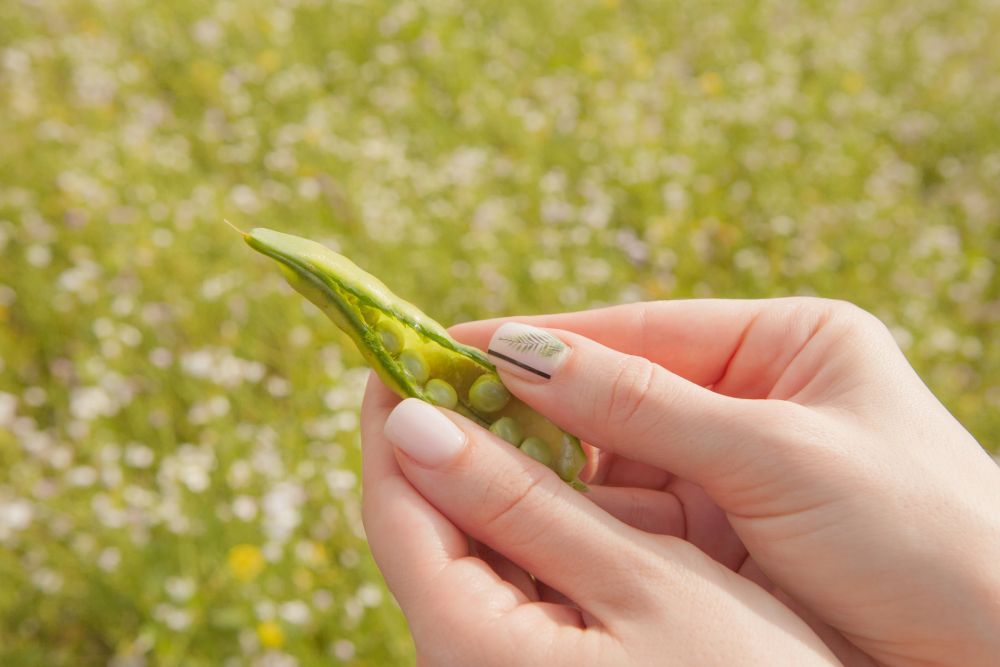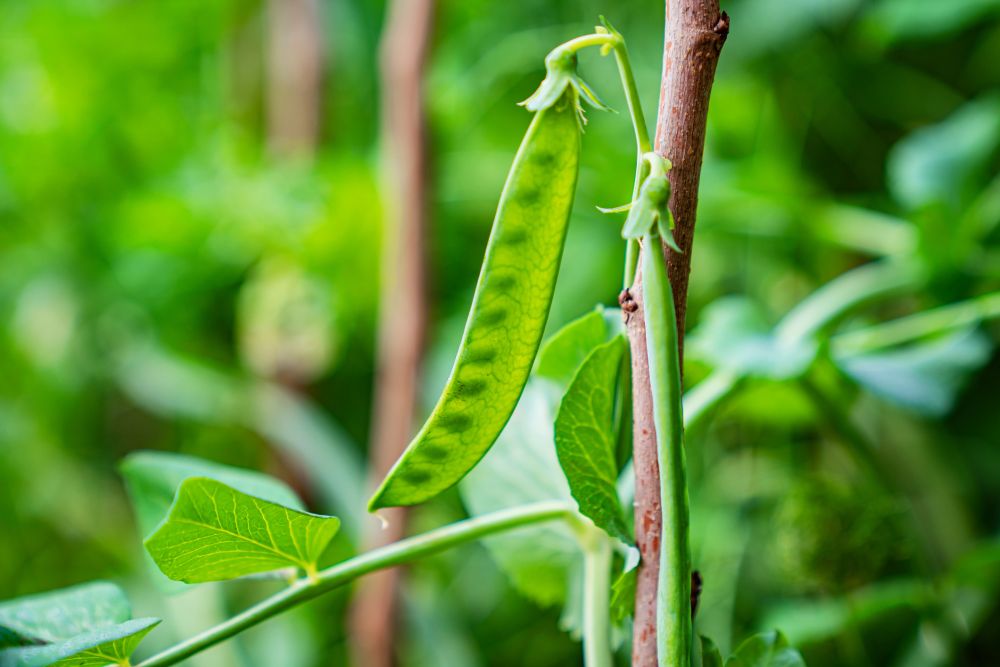Beans Growing Problems And How To Fix Them
Crisp, tasty, and nutritious, beans are easy plants to grow. With the right care, you can have your beans productive every season. But of course, that’s not always the case. Beans growing problems are often too complex to solve without experience and online research. And although the legume is not exactly dainty, it will still respond to different growing conditions in ways you cannot expect.
From too empty pods and the various challenges that exceptionally unpredictable weather poses, to poor yield and stunted plants. Not to mention the many diseases that afflict this delicious legume throughout its long lifetime. This article tackles the most common beans growing problems and offers tips and expert solutions to deal with these problems.
Beans Growing Problems: Pods Are Empty
After all the hard work you put into the bean patch, there’s nothing more frustrating than discovering that the pods are just empty. Not only that was a waste of time, but it can put you off growing beans again. This is why we start our beans growing problems with tackling this recurring issue.
The causes of empty bean pods vary. It could be that you harvested the beans before they’re mature enough. Or you could have applied the wrong fertilizer or too little nutrition. There’s another less obvious reason for bean pods not producing seeds and that is the bean variety is seedless by design. Some cultivars are grown for their succulent pods, not the seeds inside of them.
How to Fix it
Since there are many reasons for beans developing seedless pods, you’ll need to go through them one by one. Some causes for this problem start way early and long before the beans have flowered. So it pays to keep in mind the following tips and recommendations and use them to guide you through the caring phase.
-
- Too much Nitrogen: One of the golden rules of gardening is to use low nitrogen fertilizers with flowering plants. This applies to veggies as much as flowering annuals and perennials. Nitrogen encourages foliage growth at the cost of flowering. You should apply a custom 5-10-10 fertilizer with more concentrations of phosphorus.
- Inadequate Watering: While beans don’t like too much water in the soil, drought puts them under a lot of stress as well. Dry soil stunts the plant’s growth and puts the bean into self-preservation mode where seed production becomes delayed.
- Too Young: Your bean pods are empty simply because they’re too young. If you harvest them before they’re fully mature, you won’t find enough seeds there or you will find immature seeds.
- Poor Soil: Although beans fix the nitrogen in the soil, they still need plenty of nutrition to survive and grow. It’s a good idea to side dress them with organic materials and homemade compost and aged manure.
- Warm Weather: This affects both the flowering and maturity phases of the beans. If the temperature stays above 84 degrees F for a few days in a row, it will impact the flowering of the plants and hinder the self-pollination process.
No Bean Flowers
No bean flowers are one of those beans growing problems that many gardeners complain about. And since flowering is crucial for your harvest, it’s in your best interest to have an abundance of self-pollinating blooms on every bean stalk you grow. As usual, the sooner you take action the better chances you have of saving up your bean harvest this year. So what causes beans to abstain from flowering?
- High nitrogen intake is one of the main reasons the plants grow more leaves and stalks than flowers.
- Inadequate temperature is another culprit. Beans don’t like it when the temperature goes either too high or too low.
- Not enough sun would also impact the flowering of the beans.
- Long dry spells can also wreak havoc with your bean flowers.
How to Fix it
Since they’re categorized as fruits, not veggies, you need to treat your beans with the same care and attentiveness you’d give to your fruit plants. It also pays to understand the special needs of beans when it comes to soil and fertilizing. Here are a few remedies to the no bean flowers issue.
- Go easy on nitrogen feeding. Like other legumes, beans get their nitrogen from the air and even deposit the excess in the soil.
- Check the soil and make sure it has enough basic nutrients for the beans to grow. Remedy the shortage with organic compost and plant food supplements.
- Plant the bean seeds in the soil when the temperature is above 60 degrees F.
- Always choose a sunny spot in the garden for your beans. The sun encourages flowering and helps with the self-pollination process as well.
- Don’t put the plants under stress due to poor watering patterns.
Stunted Bean Plants And Pods
Different bean varieties have different sizes. But when the bean stalk doesn’t measure up to your expectations, you might be facing one of those unique beans growing problems. And it’s a head-scratcher for sure. That’s because many factors contribute to causing the beans to look stunted and their pods to be underdeveloped.
But generally speaking, you should look at the soil, temperature, density of the plants, weeds, mulching, and watering. To complicate things further, more than one of these conditions might lead to the stunted bean issue. So if you solve one of those problems, keep going down the list and fixing all the other problems as well. This might not solve this year’s harvest, but future bean patches will be alright.
How to Fix it
Let’s go through that list and see how each item can impact the growth and health of your bean plants.
- Use mulch to improve moisture retention in the soil and protect the plants against sudden weather changes. Plastic covers can also make it easier to start your plants early.
- Low temperature impacts the growth and development of the plants. You should start the seeds when the soil temperature tops 60 degrees F.
- Rich soil is essential for the success of your bean plants. Make sure the soil is well-drained and has plenty of organic materials before you sow the seeds.
- Regardless of what bean variety you grow, you should space the rows about one foot apart and keep the plants well spaced. This prevents the plants from competing over resources and gives them room to grow.
- Give the beans about one inch of water per week. Don’t let the soil dry out since that stresses out the plants and leads to stunted beans.
- Beans are not very competitive plants and they don’t do well with weeds. So remove weed regularly from the beds.
Beans Growing Problems: Bean Sunscald
As much as beans love to grow under the sun, too much sun or direct exposure to the glaring sun for long hours can bring in problems of their own. One of those beans growing problems is the bean sunscald. That’s a fancy name for regular sunburn. Just like your skin reacts to UV rays, the surface of the bean leaves shows signs of stress which could worsen if you don’t step in.
These symptoms start up as tiny spots on the surface of the leaves facing the sun. They vary in color between red to brown or bronze. Day after day, the spots join together, and pretty soon, the whole leaf turns brown and dies.
How to Fix it
The first thing you need to do about bean sunscald is making sure you’re dealing with a sun-caused problem and not a fungal infection. Both sunscald and rust have the same symptoms. But while one just requires some sheltering, the other needs a fungicide spray.
- If you’re spraying the beans or nearby plants with a fungicide, don’t do it on sunny days. The combination of sunlight and fungicide could cause bean sunscald.
- Check that the soil is well-drained. Heavy soil with high water retention can make the plants more susceptible to sunscald.
- Nitrogen-high fertilizer can put the plant under a lot of stress which makes it more prone to diseases. So use custom fertilizers with low nitrogen ratios.
- Beans are more likely to suffer from sunscald in the spring when the weather changes at the drop of a hat. So, protect the plants with artificial shade during sunny afternoons.
Bean Baldhead
This oddly named disease affects beans at a very early stage. The plants never reach their full development or maturity. The stalks are always small and deformed. The same happens to the leaves as well. Overall, your bean patch looks barren and the plants look isolated and tiny. This is a far cry from the usually lush and dense foliage that normal bean plants display.
And at the heart of this most puzzling of beans growing problems is the seed itself. Damaged seeds will not grow into healthy plants. So what can you do about this problem and how to avoid bean baldhead issues?
How to Fix it
First, we need to know what causes bean seeds to become damaged. This usually happens when the beans are too dry and during harvesting or processing, they are exposed to a lot of friction or rough mechanical treatment.
So always get your bean seeds from reputable and reliable sources. If you use the beans you harvest from your plants, always treat the seeds with care when harvesting, cleaning and storing them.
Dry soil can cause the bean seeds to be brittle and more prone to damage. So water your bean plants regularly to reduce the chances of having damaged seeds.
Beans Growing Problems: Halo Blight
Despite the varieties of beans and the many options in terms of flavor, taste, and color you have, one disease seems to stalk all varieties. That is halo blight. But don’t let the romantic name fool you. Halo blight is a bacterial disease that needs to be taken seriously.
For one thing, the disease doesn’t just infect the leaves and stalks. The bacteria also engrains itself in the seeds to ensure that future crops will also be infected. That’s how dangerous halo blight is.
Symptoms include lesions that have halos around them. Sometimes the lesions will be more sneaky and show no visible signs. That makes them harder to detect and treat.
How to Fix it
The best way to control and prevent the spread of the bacteria that causes halo blight is to manage the conditions that promote the disease. These are usually high temperatures and high humidity. If you live in a hot zone where excessive rainfall causes humidity to remain above 80 percent during the spring and summer, then you should grow beans in a greenhouse or in containers.
It also helps not to grow the beans in a spot with a history of halo blight infections. And finally, you should get high-quality seeds from certified sellers.

